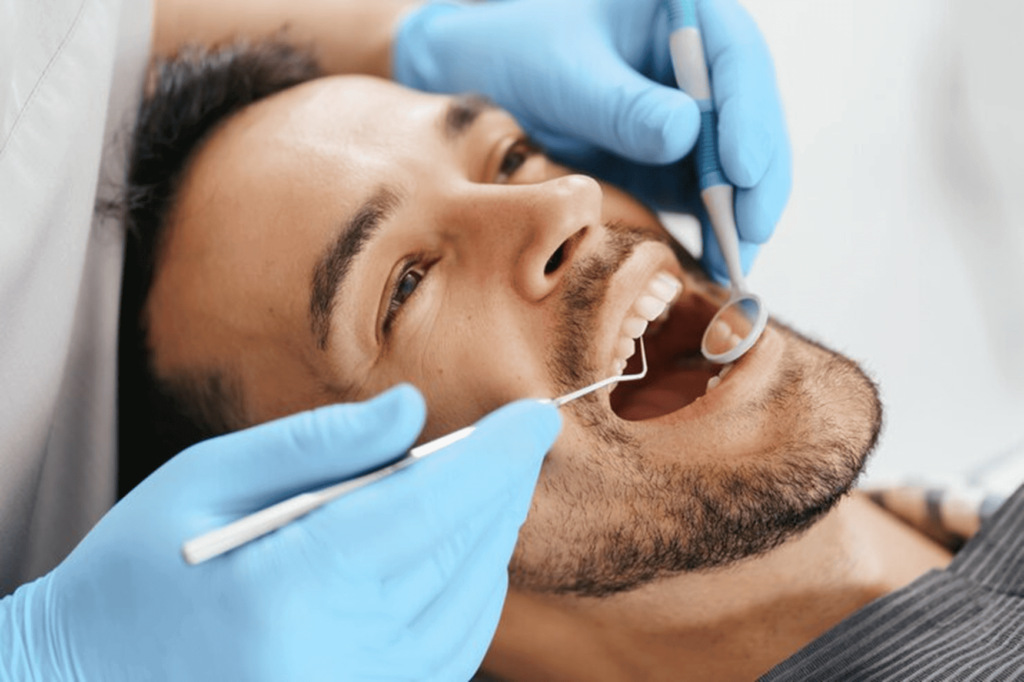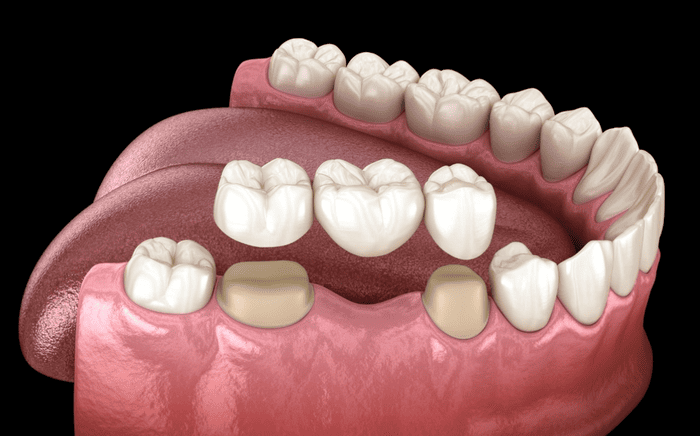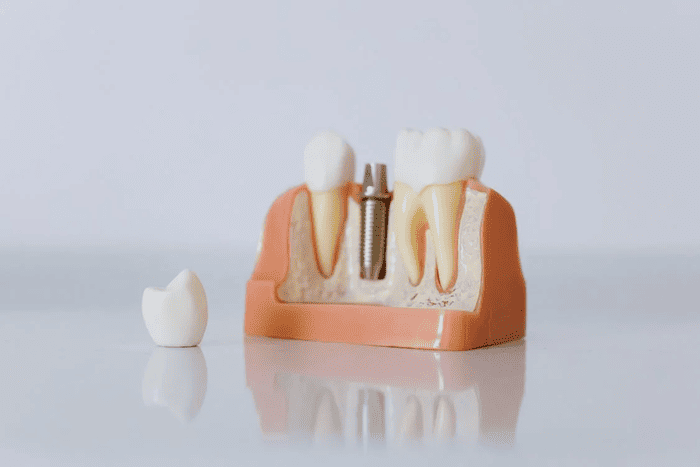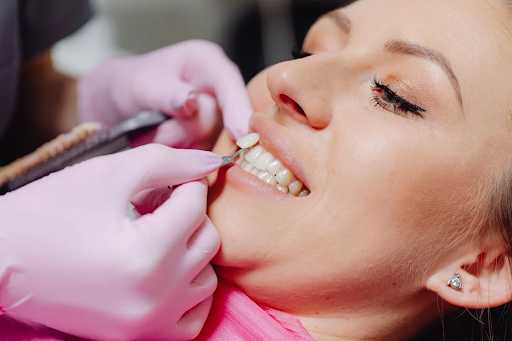In the United States, it’s estimated that 50–70% of adults need restorative dental care due to cavities, broken teeth, and muscle wear and tear. Restoring dental treatment helps fix these problems and restore both the function and appearance of your teeth.
From fillings to crowns and implants to bridges, restorative dental treatments can repair damage caused by decay or accidents. Beyond just fixing teeth, this treatment can prevent further oral health and improve your confidence by enhancing the smiles.
Here, you will learn about restorative dental treatment, its benefits, and the types of treatment that can help you have a healthy and bright smile.

What is Restorative Dental Treatment?
Restorative dental treatment, meaning the process of restoring the function, structure, and appearance of damaged or decayed teeth, is a specialized area of dentistry. While cosmetic dentistry is basically a way of improving the aesthetic appearance of the smile, then restorative dental treatment makes certain that patients can chew, speak and smile.
Some of the usual dental restorative treatments are fillings to treat cavities, crowns to reinforce brittle teeth, and bridges for the missing teeth gap. Implants, the other category of restorative treatment, are permanent because artificial teeth are fixed in the jawbone.
Restorative Dental Treatments is necessary for oral health in the perspective of numerous weeks or months. Nevertheless, with strong teeth you avoid complications like infections, toothlessness and even misalignment.
What Does Restorative Dental Treatment Cover?
When you need restorative dentistry procedures, your dentist will present you with a number of choices based on your dental profile. Let’s take a closer look into the specifics of each procedure:
1. Dental Fillings
A dental filling is all about repairing cavities caused by tooth decay. When your tooth decays, the affected area is cleaned out, and the cavity is filled with a material that restores the tooth shape. The filling can be made from a variety of materials. The most widely used by dentists are:
- Silver amalgam
- Composite resin
- Porcelain
The filling process is quick and usually done in one visit. Your dentist numbs the area, removes the decayed part of the tooth, and also fills it with the chosen material. Filling prevents further decay and protects your tooth from future damage.
2. Dental Bridge

A dental bridge is used to replace one or more than one missing tooth. It consists of a false tooth (or teeth) held in place by crowns that are placed on the adjacent healthy teeth.
This process involves your dentist preparing the neighboring teeth by filling them down so they can support and strengthen the bridge. After that, a custom-made bridge is fitted over these teeth, and the artificial teeth are placed in the gap. Bridges replace the function of your teeth and also help you to chew and speak easily.
Without bridges, the gap from a missing tooth could lead to bite problems.
3. Dental Crowns
Dental crowns, also known as caps, are custom-made covers that completely encase or cover damaged or weakened teeth. It assists you to regain the shape, size and strength of your tooth.
In order to apply a crown, your dentist will need to take out some of the damaged tooth or decayed material. Then a crown that has been made to fit the tooth is put and cemented over the tooth. Crowns help prevent further decay or breakage. It can last many years as long as you care properly.
For those whose teeth are too damaged, a crown is often the best option to save them. Using this 3D pro zir teeth crown in restorative treatment is a good decision since it’s highly durable and creates a natural-looking appearance. With a smooth color transition from the base (cervical) to the edge (incisal), this crown creates aesthetic appeal for teeth. Its 1100 MPa flexural strength keeps it highly durable for a single crown to larger 14-unit bridge structures.
4. Dental Implants

Dental implants are a permanent fix for missing teeth and are also used in dental restorative treatment. Unlike bridges or fillings, implants are placed directly into the jawbone and are a more stable way of replacing teeth.
The process takes several months, but the results are permanent. Your dentist places a small titanium into the jawbone where the tooth is missing. Over time, the bone heals around the implants and makes them strong and secure. A custom crown is then placed on top of the implant to complete the look.
Implants are one of the most durable and natural options. They help you to maintain jawbone health by stimulating bone growth.
5. Dental Bonding
Dental bonding is a fast and affordable way that can be used to correct small defects in the teeth such as chips, cracks, and spaces between the teeth. Although it is commonly used for aesthetic purposes, it is also a suitable choice in restorative teeth treatment for patients who want to have a beautiful smile without invasive procedures.
The process of bonding involves placing a tooth colored resin on the affected area and then sculpting it to fit the natural contours of the tooth. Then your dentist uses a special light to harden the material and bond it to the tooth.
It is a relatively fast process and can be completed in one visit.
6. Inlays and Onlays
Inlays and onlays are similar to dental filling, but this process is a form of indirect filling that is used when a tooth is too damaged for a standard filling.
Inlays are used to fill demange cavities within the cups of the tooth. On the other hand, onlays cover one or more cups of both. Both are custom-made in a lab and then placed by your dentist.
The procedure begins with your dentist cleaning out the decay and then taking impressions of the tooth to create a custom inlay or onlay. Inlays and onlays are more conservative than crowns and provide better aesthetics as well. They help you to maintain the shape of the tooth.
7. Veneers

Dental veneers are thin layers of porcelain that are placed on the exterior part of your teeth to enhance looks and are one of the most common procedures in restorative dentistry. They are commonly employed to treat some of the problems that affect people’s teeth, such as stains, cracked teeth and teeth that are overcrowded.
To place veneers, your dentist will first need to shave a section of the tooth’s enamel. Then, an impression is taken to make your custom veneers that are cemented to the tooth. Moreover, the porcelain used in the veneer can be colored to match the share of your teeth using this zirconia coloring liquid. Comes in different shades — SHT 16, SHTPW 16+26 color Liquid, SHT 26 Color Liquid —this coloring liquid gives a more natural and customized appearance for crowns, bridges, and other restorations.
Dental veneers are ideal for people who wish to improve their smiles. It produces very natural and aesthetically pleasing outcomes and may last for many years.
In addition to the proper selection of the treatment, the quality of the restorative materials and instruments is crucial to improving the results of restorative dental treatment. Aidite, a global provider of comprehensive dental solutions, is dedicated to advancing restorative care with a full range of materials and equipment. From R&D to manufacturing to service, Aidite provides products for enhancing the quality of restorative dentistry.
Aidite helps dental practitioners with a wide range of quality materials, from accurate 3D printed crowns to durable implants, and advanced dental equipment. These offerings are designed to get the best result in restorative dentistry procedures, supported by the successful cases and individual approach of Aidite.
For more information on the products, visit the Aidite website to get product specific information and help. Aidite’s commitment to quality guarantees the high quality of services to dental practices that aim at patient satisfaction through innovative restorative services.
Benefits of Restorative Dental Treatment
Restorative dentistry procedures have many benefits that extend beyond the aesthetic aspect of your teeth or your appearance. Here are some key perks of opting for restorative care.
- Restore Optimal Oral Health: Minor restorative dental care is necessary for the health of the teeth. These treatments include crowns, implants, or fillings, which assist in restoring the affected teeth and avoid more harm.
- Eliminate Dental Pain and Sensitivity: I know gum problems and cracked teeth cause persistent pain and sensitivity, especially when eating hot or cold drinks. Restorative dental procedures get rid of these sources of pain and bring back a painless lifestyle when eating and speaking.
- Enhance Chewing Function and Comfort: Damaged or missing teeth can make it difficult to chew properly and lead to digestive issues. The restorative teeth treatments like bridges and implants help you restore your ability to chew food comfortably.
- Lower the Risk of Future Dental Issues: By addressing dental issues at the early stage with proper treatment, you can prevent more serious problems in the future. It also prevents tooth loss and deterioration.
- Improve the Appearance of Your Smile: One of the most noticeable benefits of restorative treatment for teeth is the dramatic improvement in the appearance of your smile. A restored smile can boost your confidence and help you feel more comfortable in the social circle.
What Are the Risks of Restorative Dental Treatments?
While the major restorative dental treatment offers many benefits, it’s important to be aware of the potential risks or complications. Here are some of the common risks associated with these procedures.
- A possible allergic reaction to material used like porcelain
- Risk of oral injection at the treatment site
- Damage to adjacent teeth or gums
- A risk of tooth sensitivity after treatment
- Risk of treatment failure over time due to improper care
- Discomfort or pain during and after procedures
- Need for additional procedures if the complication arises.
FAQs about Restorative Dental Treatment
- What is most commonly used in restorative dental treatment?
The most common use material in restorative dental treatments includes composite resin for filling, porcelain for crowns, and titanium for dental implants.
- What is the difference between restorative and cosmetic dentistry?
The primary focus of restorative dentistry is to repair damaged teeth and restore functions like chewing and speaking. On the other hand, cosmetic dentistry aims to improve the appearance of teeth like color, shape, and alignment.
- How long do restorative dental treatments last?
Restorative dental treatment lasts for 10 years, depending on the type of treatment and proper Dental Care.
- How much does restorative dental treatment cost?
The restorative treatment costs range from $150 to $30,000 per tooth. It depends on the procedure’s complexity and material use.
Conclusion
To sum up, restorative dental procedures are essential for maintaining optimal oral health and preserving the function of your teeth. Whether it’s filling cavities, replacing missing teeth, or bonding, major restorative Dental Care treatments prevent your teeth from future dental issues.
The procedures discussed above not only restore your teeth function but also improve comfort, chewing ability, and overall oral well-being. Aidite supports these treatments by offering high-quality materials and solutions, enhancing results in different restorative processes. If you see any dental issues, go to your dentist as soon as possible because preventing the problem from worsening can save you time and money.



